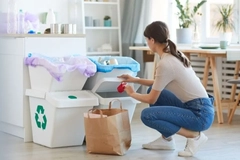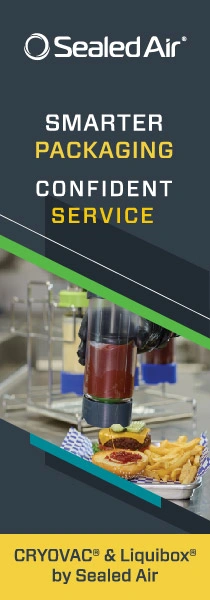Digital DRS shows promise but faces industry skepticism
Key takeaways
- DDRS can offer a more flexible and cost-effective alternative to traditional systems, using unique packaging codes
- DDRS promises higher collection rates, but its unproven effectiveness hinders adoption
- Wales leads the way in DDRS implementation, showcasing promising trial results and offering consumers convenient, digitally-enabled return options.
Deposit return systems (DRS) have been emerging worldwide to promote circularity and reduce plastic pollution. Emerging as one type of DRS are digital deposit return systems (DDRS), which have the same concept as a conventional DRS, but with the addition of a digital component.
However, critics point out the flaws of a DDRS, which include a lack of data proving that DDRS effectively reduces litter and accessibility concerns for those without internet access or digital literacy.
Packaging Insights speaks to the DDRS Alliance, a non-profit based in the UK, and Reloop to discuss the feasibility of a proposed DDRS, which has yet to be fully implemented in any country.
Explaining a DDRS
Duncan Midwood, CEO at the DDRS Alliance, explains that digital systems are enabled through unique packaging codes.
“This coding, most likely in the form of a QR code (but could be some other form), enables the public to scan the product using their smartphone and get their deposit back through an app or similar.”
Conventional DRS uses a reverse vending machine (RVM), commonly found at supermarkets, where consumers can return their empty bottles or packaging.
Midwood explains that a DDRS enables returns through a much wider range of return points, including machines like RVMs, manual returns, community-based return points, and kerbside recycling bins.
“DDRS enables all the same return options as a conventional DRS, but adds many more return options for consumers when out and about and at home,” he adds.
DDRS superiority
Midwood asserts that there are many advantages to a DDRS, including lower cost and carbon footprint.
He adds: “DDRS also has improved transparency as there is fully bottle-to-bottle tracking through the supply chain — eliminating mis-reporting, which we know does take place in a conventional solution.”
“DDRS needs only a code printed on the container. So, unlike a conventional DRS, the product does not need to be a semi-rigid cylindrical container. This means drink cartons and even sachets could be included. As the capital outlay is so much lower, there is a much reduced risk of redundant equipment in seven to 10 years.”
He adds that a DDRS can foster consumer engagement, as QR codes provide consumers with extra information about the product.
Midwood adds: “Basic logic would suggest that a DDRS can only improve the collection rate. The degree to which this happens is unproven. In a well-designed DDRS solution, we would expect 98-99% collection rates to be achieved, compared to approximately 90% from a conventional solution.
Technical limitations
Sarah Horner, UK and Ireland director at Reloop, is more doubtful about the efficacy of a DDRS, stating that it has not yet been scaled effectively.
She adds: “There are still technical limitations to introducing DDRS, such as adding unique marking codes to drink containers at an industrial scale.”
A 2024 Reloop fact sheet explained other limitations of a DDRS.
It stated: “One significant limitation observed in the many DDRS trials thus far is the notable absence of a monetary deposit, thereby omitting a fundamental component of a DRS.”
“Instead of requiring consumers to pay a sum of money (aka the deposit) upfront at the point of purchase, which is later refunded upon container return, most trials that have been carried out involve the use of rewards or incentives, offered by system operators or producers, to consumers.”
Another concern from the Reloop report is that a DDRS assumes existing municipal waste management infrastructure can absorb and manage in-scope material as part of household waste.
It states: “This would likely require infrastructure repurposing and upgrades that have not yet been explained or cost [estimated] in detail.”
Higher collection rates
Midwood acknowledges that a DDRS could lead to “slightly increased” contamination in collected material streams. However, he argues that collection rates in a DDRS are modelled to be higher.
Midwood adds that critics claim a DDRS can lead to poor quality collection material that makes recycling more expensive.
He says: “This has not been demonstrated at scale, but smaller trials have shown how a DDRS can deliver close to the same quality as an RVM-based DRS model and yet collect a higher percentage of the material.”
Wales leads the way
Paving the way for the first functional DDRS is Wales. Multiple trials across the country have highlighted how a DDRS fostered greater consumer convenience and collection rates.
Recently, Wales announced its DDRS, which will allow consumers to scan QR codes on containers using a mobile app before placing them in curbside recycling streams to claim the deposit.
Midwood adds: “A well-designed DDRS ensures that the easiest thing for consumers to do is to return the containers to the correct waste stream. The large trial in Brecon demonstrated high compliance with this, as 98% of containers used to get a reward were returned in the correct stream at kerbside, 100% in other return options.”
Alice Rackley, CEO at Polytag, the company facilitating Wales’ DDRS, told us that Wales’ dedication to a digital solution is a “crucial endorsement” of hybrid solutions, which have the “potential to provide significant economic and environmental benefits while maximizing outcomes and removing barriers for consumers compared to an RVM-only model.”











